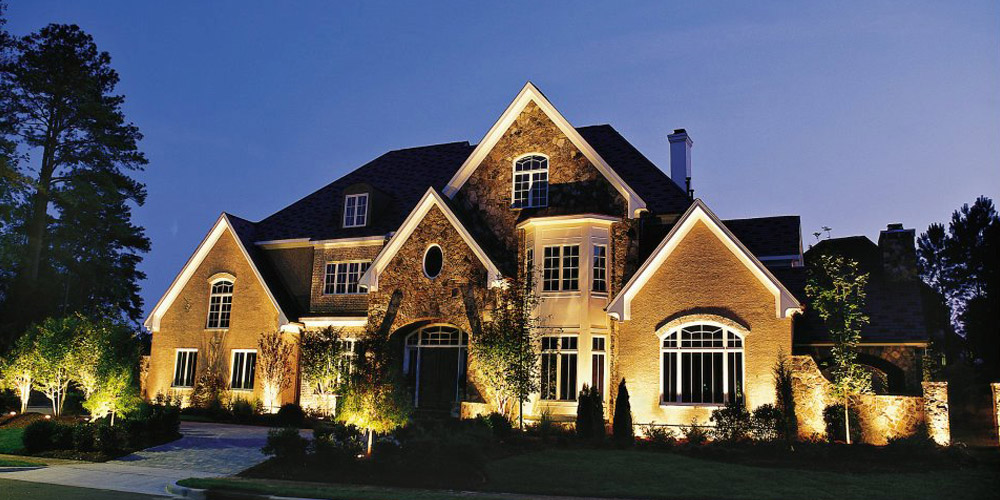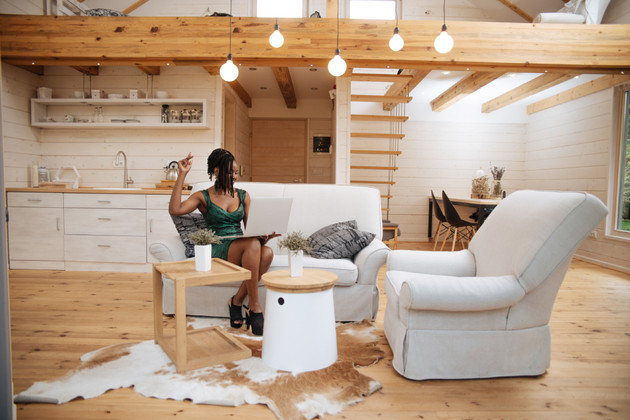LED Spotlight: Accent Lighting Techniques for Your Space
Aug 21st 2020
We’ve devoted a lot of ink...or...pixels?...to discussing the various layers of lighting that every room should employ. We’ve discussed ambient, task, decorative, and accent lighting at length recently but one thing keeps coming up that we found interesting. People are afraid of accent lighting. More specifically, they’re wary of it, scared of “getting it wrong.” Accent and decorative lighting are some of our favorite kinds of lighting. They can completely transform the look and feel of a room with only a few touches. It’s fun! But that blank canvas where your creativity can just run wild can seem daunting to some. To help make it feel less scary, we’ve put together a small list of some simple but effective techniques you can use to start filling that blank canvas of yours.
Backlighting
Backlighting is a really cool and fairly easy technique that gives additional depth to your space. There are many ways to utilize this technique. The picture above is a bit more intricate and requires some wiring in the walls and installing those textured panels. The look can be achieved either with the addition of sconce-like sockets that use a standard A19 LED bulb, or by installing LED troffers for T8s and running them behind the panels.
Another common backlighting technique is achieved by running rope or strip lights or even installing T8s behind a mirror, piece of art, or even a TV, highlighting the space that would otherwise be obscured or covered in shadow to make the object in front pop out more.
This technique is much less time- and labor-intensive in that it often is a case of using lights that simply plug into a wall outlet and attaching them by some means to the television or otherwise behind the entertainment console.
Display lighting
Display lighting highlights things you want to be noticed. To achieve this effect, light is directed onto areas or objects you want to make more prominent in a room. In the home, display lighting is commonly used to feature objects placed inside large, glass-door cabinets or on alcoves and shelves and can also be used to highlight artwork on walls or above fireplaces. Using light to effectively display these items often means highlighting just one item on a shelf, in a cabinet, or on a wall at a time. The best way to achieve this is with spotlights (reflector bulbs like SunLake’s BR20, BR30, or BR40 with focused beam angles) placed in downlight or track light fixtures.
under-cabinet lights are most often used to show off items on shelves or in cabinets.
You want to make sure that as much of the object falls within the beam of the light as possible. If the spotlight is too close to the object, it will only illuminate a small portion of it, leaving the edges in darkness. If it’s too far away, the beam will diffuse too much and the effect of spotlighting the object will be lost to the rest of the ambient light in the room. The key is positioning the spotlight so that it highlights the object with just enough of the beam to spare without getting too diffuse. If you’re looking to spotlight a large object, either something very tall like a statue or very long like a panoramic painting, you will likely need a series of spotlights to illuminate it from different angles and at different heights. You’ll want to eliminate shadows on the object itself as much as possible while creating contrast between the object and the wall behind it.
Uplighting

Uplighting involves using fixtures to direct light up towards the ceiling or to light objects from below for dramatic effect. Silver crown bulbs and certain lamp shades can deflect light upwards when used in standing or table lamps, and select wall lights or sconces mounted higher on the middle-third of your walls can also direct light up – typically to illuminate high or vaulted ceilings. Uplighting can also be used outdoors, often coming from a fixture using a PAR30 or PAR38 bulb mounted in the ground, to draw attention to scenic features such as fountains, sculptures, trees, or plants. It is also commonly used to angle artistic touches of light towards the front of the home.
Cove or soffit lighting
Cove or soffit lighting requires some building work to do properly or at all. It takes advantage of space between the wall and the ceiling to illuminate and frame the edges of a room. This kind of lighting provides depth, creates contrast and shadow, and lends a sense of modern elegance to any space. Previously reserved for high-end offices or retail stores, the inexpensive nature of LEDs has contributed to it becoming more popular in homes as well. A good way to achieve this look is by installing T8 troffers in the alcove or soffit.
Wall Washing
This effect is achieved by covering an entire wall with light, from ceiling to floor. This technique is typically used to expand boundaries or call attention to positive aspects of your room, such as artwork or architectural accents (e.g. mantles built-ins, walls with interesting texture, etc.). To create a wall-washing effect, mount track lights with BR-series bulbs or other directional light fixtures at or above the ceiling.
The biggest takeaway when it comes to accent lighting is that doing it right usually means doing it subtly. You want the thing you’re highlighting to be the focal point, not the source of the light itself. It may take a little trial and error to get things set up just the way you want them, but once you do the effects can be breathtaking.


